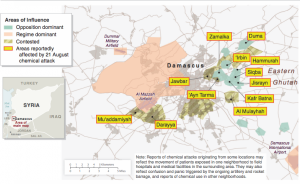Operation Ballsack Labor Day Football Trash Talk
Hello. Is there anybody in there? Just nod if you can hear me.
I am not sure how well the Trash Talk Machine is greased after such egregious neglect. But, we can only do what we do, and carry on. And those skilz have NOT been forgotten jack. So saddle up cowboys and cowgirls.
You would think being a blogger is an easy, Cheetos filled, lifestyle. Not the case. It is hard work, hard work I tell ya. I have suffered the indignation of Marcy and Jim yammering about wanting “trash this” and “trash that”. Weeeeelllllll that is so much SPAM! So, as I said earlier, it’s not easy, you know. I get no respect!
To make a quick comment on the title of this 2013 football season opening trash, shit is truly fucked up and bullshit. We have Mr. Constitutional Nobel Scholar President agitating to make unilateral bizarrely unnecessary war on Syria….apparently because he screwed up and drew a moronic “red line” in the sand and now has to prove he actually has bolas, in addition to stupidity and hubris. The man who when seeking votes to be elected in 2007-2008 claimed war without Congressional assent was wrong, and whose Vice-Predident called such unsanctioned war bullshittery and an “impeachable offense”, now insists without the UN, without the Brits, and with a coalition of effectively one (one who were previously described as “cheese eating surrender monkeys” not that long ago in American lore). But that is where we are now. Which is why the best name for this clusterfuck is “Operation Ballsack“. Yes, it is all about Obama’s balls, and his desperate need to prove he actually has a primordial pair.
Huh? Oh, wait! This was supposed to be football Trash Talk wasn’t it?!?!
Yikes, better get to that then. Last night was a pretty exciting open to the NCAA 2013 schedule. The ‘Ole Ball Coach Spurrier and the ‘Cocks did not seem all that animated, but still clocked a fairly solid NC Tarheel team. Looked like Vady was gonna take a bite off the ‘Ole Miss Rebels, but Ole Miss tailback Jeff Scott let loose with a 75 yard TD romp with 1:07 left, giving the Rebels a 39-35 last minute win. Good stuff. In other news, Lane Kiffen proves the question of why he has not been fired yet is still very salient by coaching a narrow win for Tommy Trojan over the Rainbows. Mighty Troy barely made it over the Rainbows. Yay. If that is all USC has, even the Sun Devils are going to wax them this year (a game I will be attending by the way). also, from Friday night, let me just say that Sparty has some VERY sticky fingered defenders. Look out B1G.
Well, what else is up I wonder? Hmmmm, appears some fella named “Manziel” was suspended half a game for something. Guess it wasn’t anything bad, cause Dez Bryant got suspended a whole season for eating dinner with Neon Deion Sanders. I sign my name on things a lot too. I get paid to do so. Not sure who would sign thousands of items for zip, nuthin, free. Apparently the crack investigators and accountability specialists at the NCAA found no problem though. And you KNOW how sane they are, cause they banned Penn State from all bowls for four years without having any NCAA violation whatsoever present. Ugh.
Alright. Games. Real ones are being played this weekend. Battle manufactured where it should be. Naturally. By a nerd at ESPN instead of that fake Operation Obama Ballsack baloney.
The game of the weekend looks to be Georgia at Clemson. These are two top ten worthy teams, if not potential national championship contenders. Special players abound everywhere on both teams, including Sammy Watkins the super receiver for the Tigers, and Tajh Boyd his quarterback. For the Bulldogs, Aaron Murray may be the best QB in the conference, and that includes Johnny Football. Awesome game to have so early. Alabama hosting Virginia Tech is another unusual one to start off with. The Tide will roll them, but there could be a struggle. should be a way better game than the Tide expected.
Honorable mentions goes to TCU and LSU in neutral Texas, Boise State/Washington and Cal versus Northwestern. Tell us what you have and why!
The one other thing I want to address is the noggins of the NFL. As you may have heard, there was a settlement this week, and it heavily favored the NFL. The craven plantation owners admitted nothing, gave up no liability findings, and gave up a ridiculously cheap total sum as hard settlement. By the time lawyer’s fees and mandatory testing etc. is deducted, it is criminal how little was gotten for a class of at risk humans. Down the road, if these class members live, they and their representatives will be screaming bloody murder. Here is an outrageously great article laying out the factors, and doing so with the tart and sarcastic truth it deserves
This long Labor Day weekend’s music is from the one, the only, Ms. Linda Ronstadt. I have a real affinity for Linda, and haver seen her numerous times including a couple of very special ones. If there has ever been a better pure female vocal talent, I am not sure I have seen it. Pure, and with a range to die for. The singing voice may be silenced, but Linda is rocking on and fighting for the causes she believes in. And they are, and always have been, great, and the right, ones. Oh, also, in case you didn’t notice, she had a backup band on the first video. Chuck Berry, Keith Richards, Robert Cray and some other chaps. The second is the band she normally toured with (including Waddy Wachtel – but with Mike Botts on drums instead of Russ Kunkel, who I always saw) and, trust me, they were absolutely killer, and very cool people to boot.
That’s it for now. Let Willis, and one and all, rock this joint. We are Livin In The USA. All things considered, it is still pretty fucking grand. Enjoy the holiday weekend my friends.


